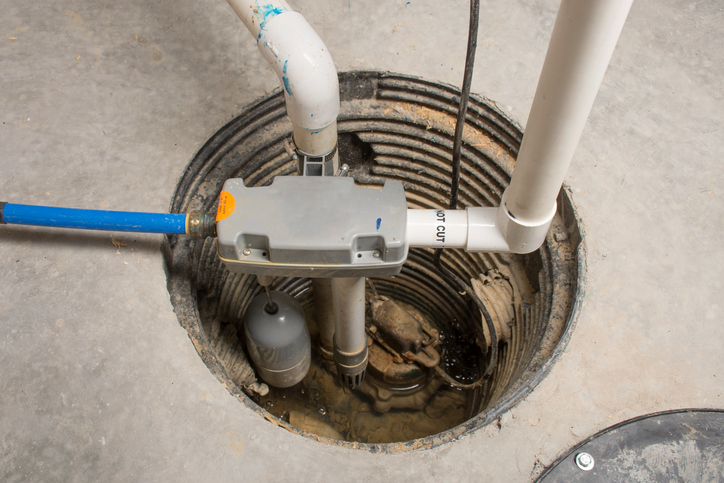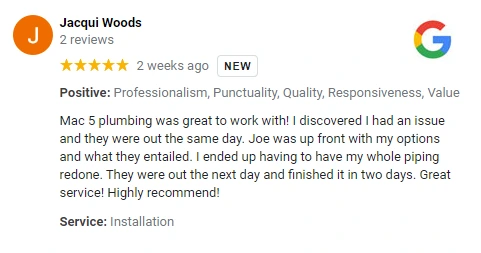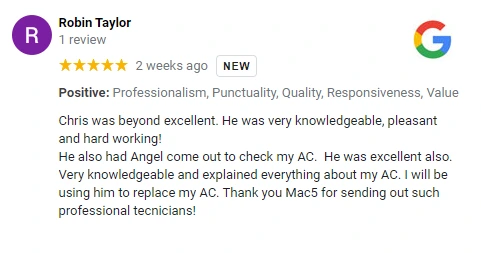
If you’re hearing odd noises in your basement, they may be coming from your sump pump. Your sump pump runs with or without rain, working efficiently to keep all kinds of water away from your home.
It’s completely normal for your sump pump to run with no rain to be seen or heard. If it recently snowed in your area, your sump pump will be gradually dealing with leftover groundwater.
However, this is unlikely for those living in Florida. Nonetheless, your sump pump may run constantly, dealing with an underground spring and other contributors to your home’s water table.
Key Points in This Article
What Are Sump Pumps?
A sump pump drains all residual groundwater from your water table. Rain isn’t the only cause of excess water around your house.
A broken pipe may leak into the basement or the ground outside, leading to flooding if left untreated for too long. There are various water sources other than heavy rains, prompting your sump pump to run constantly.
These mechanisms run nonstop to drain groundwater and maintain water levels.
Why Is My Sump Pump Running Continuously?
Sump pumps run continuously to facilitate safe water drainage. A sump pump constantly running is a well-maintained one. Let your sump pump run continuously without stressing about its condition.
There’s nothing to worry about if you keep up with routine maintenance. It’s just doing its job to prevent groundwater from infiltrating your house and plumbing.
However, it should cause concern for those who don’t keep up with routine maintenance. Your sump pump may not facilitate water flow and may have a broken float switch.
Complete Guide to a Sump Pump System
Manually adjusting a sump pump isn’t necessary. A sump pump system is fully automated. It reacts to different triggers, such as water level or pressure. Systems will drain and fill back up on their own.
All components of your sump pump work together to keep water from getting into your house.
Sump Pump Pit
The sump pit holds the basin, which is the storage component. The sump pit is a dugout and is only made of soil.
However, the basin is constructed of clay, polyethylene, and fiberglass. The basin is where water and debris pool before they’re pumped into drain lines.
Sump Pump Float Switch
The float switch acts as the whistle-blower of your sump pump. Some come in traditional tethered formats, reacting to the water level. However, other switches may come without a visible floater, using pressure sensors instead.
When a float switch reaches the maximum capacity of your sump basin, it triggers the sump pump to start pumping water to the discharge pipe.
Sump Pump Discharge Pipe & Discharge Line
All water flow is directed toward discharge components. Different mechanisms pump water out of your home upon the float switch signal.
While the water filling the basin begins to rise, discharge components are still closed and prevent its outward flow. After reaching maximum capacity, the discharge valve opens, creating an air gap for water to flow through.
Discharge Valve
The valve is found between the internal and external drain lines. The valve stops and allows water to flow upon different triggering components, like the float switch and sump pump.
Valves are cartridges installed within a pipe, standing from the bottom of the tank, linked to a different drain pipe. The valve is anywhere from 8 to 12 inches above ground level.
Sump Pump
While the whole unit is referred to as a sump pump, the main component shares the same name. The sump pump running all operations is located at the bottom of the tank and looks like an inflator pump.
Plumbers install the sump pump at the bottom of most of your water table (the point of your home) to ensure accuracy and effectiveness. It relies on your home’s power and different plumbing lines to fulfill its purpose, keeping your home safe from flooding and other water damage.
Some mechanisms work differently from others. It’s best to familiarize yourself with the kind you have at home.
Types of Sump Pumps
They all serve the same purpose and require a professional to install, maintain, and repair their systems. However, a plumber will ask you which kind you have at home for more efficient services.
Pedestal Pump
A pedestal sump pump has its motor atop the rest of the unit. It isn’t waterproof and sits away from any inlet and outlet where water flows. These installations often come with a tethered floater that reacts to water levels.
The most common reason a pedestal pump running constantly makes a lot of noise isn’t due to heavy rain. The tank has a larger capacity and is often installed in pairs or more per area. A pedestal pump is likely installed for long-term construction, buildings, or industrial structures.
The sump pump is made with more durable materials like industrial-grade stainless steel or polyethylene. It can withstand harsh chemicals better than its submersible counterpart without chipping away and succumbing to water pressure.
While it can accommodate more liquids than just storm-, rain-, groundwater, or melting snow, its motors are susceptible to water damage. If it suffers from a broken float switch, water may overflow into its power source, resulting in total sump pump failure.
If you had a professional plumber check your plumbing system recently without any indications of a clog or broken pipe, call a plumber to help determine whether the noise is coming from your sump pump that has a stuck float switch or damaged motor.
Submersible Pumps
A sump pump with a submersible motor is more common in homes than in industrial or commercial buildings. It’s fully submersible and waterproof. They’re more affordable and sustainable in small to moderate homes.
However, having one in your home with any nearby construction can damage its components. Industrial chemicals and debris may flow into the sump pump and disrupt its functions. Submersible motors are fully waterproof but are susceptible to chemicals and contaminants.
Particles getting caught in the pump may cause a malfunction within the pump itself. Water may continue to rise even with a functioning floater. While the rest of your sump pump is running, the sump pump or motor within the tank may be hindered or clogged by particles.
It will continue running. However, it won’t drain properly, and water will continue to rise. Let your plumber know of all the surrounding circumstances, such as snow or nearby construction.
It’s also best to let your plumber know the truth about the frequency of its maintenance or when it was last looked at by a professional, especially if it makes loud or frequent noises. This information will help them prepare the right equipment for its repairs.
Common Reasons Your Sump Pump Keeps Running
If you live in Melbourne, along the eastern coastline of Florida, your sump pump may be running all year. Any structure that close to a body of water may have a higher water table than in other areas.
Harmless explanations include:
- High water table
- Snow
- Neighboring leak
- Gardening
However, if it’s constantly running and making unusual noises accompanied by odors, it may be due to malfunction. Common causes include:
- Water rises too quickly, which means the basin’s capacity is inadequate
- Broken float switch, which means it can’t trigger drain components
- A malfunctioning motor, meaning there may be a short circuit
A frequently reported issue with switches often includes the float ball rod. A ball-type floater triggers the pump and valve when the ball drops. However, the ball may get stuck and prevent water flow in and out of the basin.
Sump Pump Maintenance & Tune-Ups
There may be lots of articles online offering DIY remedies, but a stuck floater may lead to worse problems and require the attention of a professional plumber.
You shouldn’t attempt DIY repairs or tune-ups with makeshift tools and inadequate know-how. You may cause worse problems with different components that your plumber will have to replace.
Trust us when we say regular maintenance and tune-ups are best for preventing damage or wear and tear.
Call Mac 5 Services for Sump Pump Services in Orlando, Melbourne & Rockledge, FL
Call our specialists to help you with any plumbing repair your home needs. Our reliable leak detection services will also help you determine whether a leak is causing your sump pump to constantly run.
If your home has a clog, it may lead to a pipe bursting, overworking your sump pump. Enlist our drain cleaning services to ensure your sump pump isn’t overwhelmed by immense water flow.
Call (321) 244-7500 today to schedule sump pump services with the team at Mac 5 Services.



